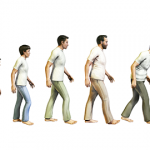SAN FRANCISCO—Considerable progress has been made in the treatment and management of rheumatoid arthritis (RA) in the past two decades, with rheumatologists now able to manage the effects of this chronic, debilitating condition for most of their patients, according to Ronald van Vollenhoven, MD, director of the Amsterdam Rheumatology and Immunology Center (ARC) in the…





